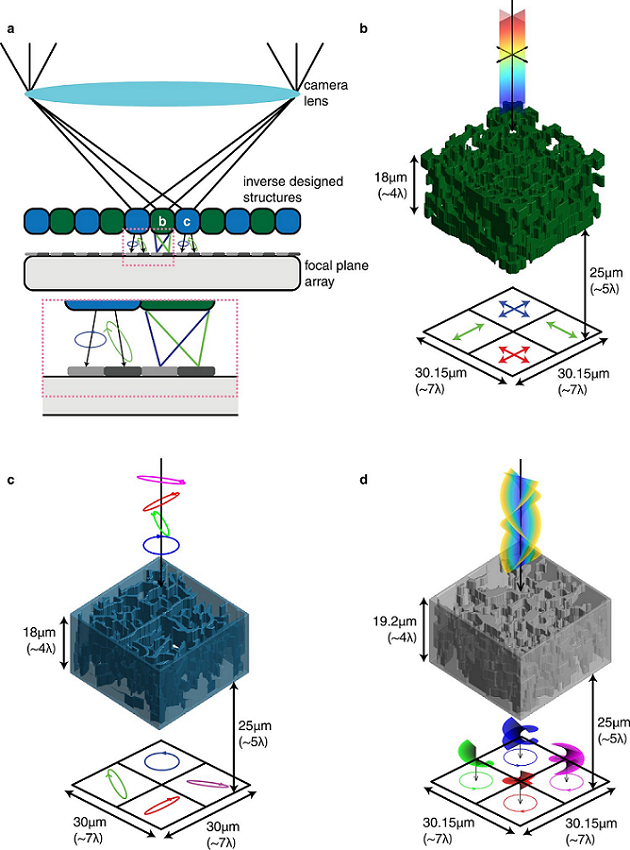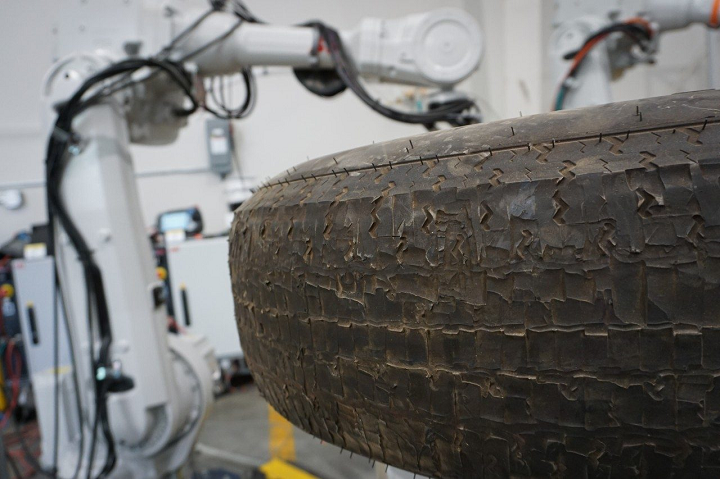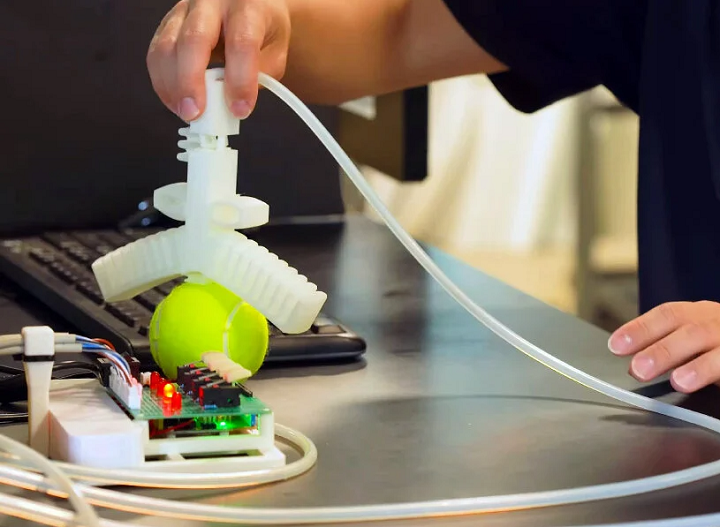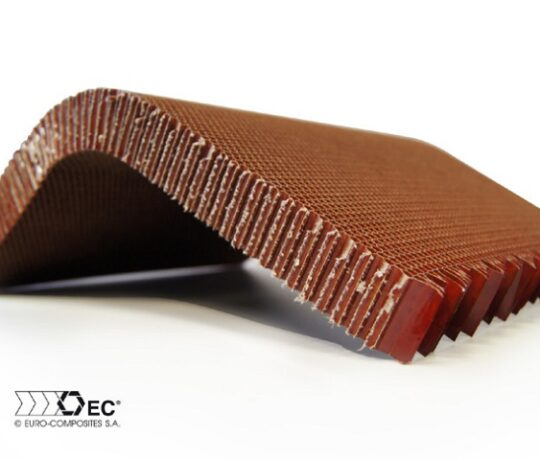We open today’s 3D Printing News Briefs with news of two partnerships: Multistation is working with EURO-COMPOSITES, while Essentium is collaborating with 3D-Fuel. Moving on to research, a Caltech team is working on a new technology to evolve and 3D print optical devices, and a novel 3D printing process out of Virginia Tech could help reduce waste and emissions in the commercial vehicle industry. Finally, roboticists and researchers at UC San Diego and BASF Forward AM made a flexible 3D printed robotic gripper that works without electronics.
EURO-COMPOSITES Names New Commercial Partner in France
Founded in 1985 in Luxembourg, EURO-COMPOSITES, an advanced composite material and product manufacturer, serves customers from production sites in the U.S., Germany, and its home country. It recently welcomed Multistation, a services supplier and disruptive technology company for digital and additive fabrication, as a commercial partner in France. EURO-COMPOSITES serves several sectors, including naval, civil and military aviation, space and defense, and railway, and provides clients with composite parts, shape composites, and honeycomb panels that are ready to be installed. Using materials like fiberglass, Kevlar, carbon, Nomex, aluminum, CMC (ceramic matrix composites), and more, these high-strength honeycomb structural elements can ensure weight reduction without losing strength and stiffness. Multistation offers a variety of machines for composites industrialization, and works with several of the same markets as EURO-COMPOSITES, so this partnership will definitely be equally beneficial.
“We are more and more involved in many projects linked to light weight and the agreement with EURO-COMPOSITES® is an important step of our approach of this market,” said Yannick Loisance, CEO of Multistation.
Essentium & 3D-Fuel Announce Strategic Partnership
Industrial AM leader Essentium, Inc. and 3D printing filament manufacturer 3D-Fuel have joined together in a strategic partnership to simplify 3D printer filament sourcing. Austin-based Essentium will now be the North American manufacturer of 3D-Fuel’s materials, and 3D-Fuel will shut down its production facility and warehouse in North Dakota to consolidate production operations to Essentium’s AS9100D and ISO 9001:2015 certified Texas facilities. The goal is to meet demand for materials, while also making the procurement process easier for customers by giving them access to a broad range of filaments through a single provider. With just one shipment and one vendor record in the accounting system, customers can purchase filaments from both 3D-Fuel and Essentium; plus, because 3D-Fuel also partners with NatureWorks, which manufactures low-carbon PLA biopolymers from renewable resources, production of plant-based materials will increase, thus helping to decrease the desktop 3D printing market’s carbon footprint. 3D-Fuel will also introduce new products enabled by Essentium’s fiber reinforcement and multi-layer filament extrusion capabilities, branded as “3D-Fuel powered by Essentium.”
“Essentium’s reputation of innovative and cutting-edge materials technologies combined with 3D-Fuel’s reputation of premium grade US-made printing materials will give customers access to one of the broadest filament portfolios in the world. Our partnership is not only about collaboration but accelerating 3D printing adoption and innovation, this coming together will also ensure that customers can use additive manufacturing to bolster their supply chain and manufacturing processes with the highest quality, American-made printing materials,” said Ryan Vano, VP of Filament Production at Essentium, Inc.
Caltech 3D Printing Nanoscale Metamaterial Optical Devices

Conceptual depiction of devices. a) 2D cross section schematic of camera with inverse designed scattering elements placed on top of photosensitive elements at the focal plane of the imaging lens. Green elements sort by color and blue elements sort by polarization, shown in more detail in (b, c). b) Rendering of multispectral and linear polarization device that sorts three bands of wavelengths with the middle band further split on polarization. c) Rendering of full Stokes polarimetry device that sorts four analyzer Jones vectors to different quadrants. d) Rendering of angular momentum splitting device that sorts combinations of orbital angular momentum (l) and spin (s) degrees of freedom. Credit: Nature Communications (2023). DOI: 10.1038/s41467-023-38258-2
Researchers from California Institute of Technology (Caltech) have developed a new technology that allows them to create, or ‘evolve,’ optical devices at the nanoscale, and then print them out of optical metamaterials using two-photon polymerization (2PP); they explained their proof of concept in a published research paper. The team wanted to see if it was possible to make 3D structures smaller than the wavelength of light they’re attempting to control, and demonstrated their design technique by printing tiny devices that can sort infrared light by polarization and wavelength. In the future, the devices could be made to work with visible light or polarized light as well. What’s really interesting is that while most optical devices are smooth and very polished, these look very organic, because they’re evolved by an optimization algorithm that keeps adjusting the design until it performs the way it’s supposed to.
“We actually do not have a rational understanding of these designs, in the sense that these are designs that are produced via an optimization algorithm,” explained Andrei Faraon, the William L. Valentine Professor of Applied Physics and Electrical Engineering, whose lab conducted the research. “So, you get these shapes that perform a certain function. For example, if you want to focus light to a point—so basically what a lens does—and you run our simulation for that function, you most likely will get something that looks very similar to a lens. However, the functions that we are targeting—splitting wavelengths in a certain pattern—are quite complicated. That’s why the shapes that come out are not quite intuitive.”
3D Printing to Improve Commercial Vehicle Tire Retreading

The tread of this commercial vehicle tire shows the effects of normal wear and tear. This tire is being used for testing of the team’s retreading method. Photo by Reilly Henson for Virginia Tech.
A team of Virginia Tech researchers was chosen for a $1.5 million project to improve the efficiencies of tire retreading in the commercial vehicle industry. When tires on these vehicles wear out, the whole surface is buffed away and a new layer of tread is adhered to the tire, which allows it to maintain optimal performance but still keep most of the material used to make the tire. However, nearly 9 pounds of excess material are wasted per tire, and the retreaded one can lead to a drop in vehicle fuel efficiency, which increases greenhouse gas emissions. The REMADE Institute, a public-private partnership set up by the U.S. Department of Energy to transition the country to a circular economy, awarded the funding, which features a 1:1 cost share between the REMADE Institute and Virginia Tech. The team also includes Arizona State University researchers and industrial partners from tire manufacturing company Michelin. 3D scanning will be used, along with new 3D printable, high-performance elastomers that “resist the solicitations of commercial vehicle tires,” and industrial robots will selectively print at specific locations around used tires.
“We are really excited to undertake this challenging project, which integrates advances in polymer science and manufacturing including 3D scanning, 3D printing, and industrial robotics. If all goes well, the resulting retreading technology could result in annual reductions of about 90 metric kilotons of tire waste and 800 metric kilotons of CO2 [carbon dioxide] emissions across the retreading industry,” said Chris Williams, the L.S. Randolph Professor in Mechanical Engineering and leader of the team.
3D Printed Robotic Gripper Works Without Electronics

The 3D printed robotic gripper is embedded with fluidic control circuits that help it pick up and let go of objects.
Together with researchers at BASF Forward AM, a group of roboticists at the University of California San Diego (UCSD) developed a flexible 3D printed robotic gripper that can pick up, hold, and let go of objects without the use of electronics. The gripper is embedded with fluidic control circuits and operates using built-in gravity and touch sensors, and the team says it’s the first of its kind. Soft robots, often powered by air, are made from flexible materials, and 3D printing has simplified their production process, especially FFF technology, which requires less manual work to create more complex, intricate structures. But, the printed robots often had leaks and were too stiff. The research team solved this problem with a design that enables the 3D printing of soft, airtight robotic devices with embedded actuators and valves in one process.
Their 3D printed actuators are very soft and can bend into a complete circle, and the 3D printed pneumatic valves are able to handle high pressure with low control pressure. By combining these, the 3D printed gripper doesn’t require electronics, and it’s able to keep both its airtightness and softness, while also being made in a single printing process over about 16 1/2 hours. Plus, the process is accessible and repeatable, because no manual work is required after printing. The gripper works using a series of valves, which look and operate just like tiny doors, opening and closing to grip and release objects. When the gripper is turned horizontally, airflow inside these valves changes, which triggers the claws to open. So to pick something up, it just needs to be pressed onto the object until the valves are triggered to open the claws, and the object will automatically be released when the gripper is turned sideways.
Subscribe to Our Email Newsletter
Stay up-to-date on all the latest news from the 3D printing industry and receive information and offers from third party vendors.
You May Also Like
Further Understanding of 3D Printing Design at ADDITIV Design World
ADDITIV is back once again! This time, the virtual platform for additive manufacturing will be holding the first-ever edition of ADDITIV Design World on May 23rd from 9:00 AM –...
3D Printer Maker EVO-tech Reborn as NEVO3D — Once More With Feeling
EVO-tech was a 3D printing service and original equipment manufacturer established in 2013 and based in Schörfling am Attersee, Austria. The company produced high-quality material extrusion systems featuring linear bearings,...
3D Systems Brings 3D Printed PEEK Cranial Implant to the U.S. with FDA Clearance
For more than 10 years, 3D Systems (NYSE:DDD) has worked hand-in-hand with surgeons to plan over 150,000 patient-specific cases, and develop more than two million instruments and implants from its...
CDFAM Returns to Berlin for Second Annual Symposium
The second CDFAM Computational Design Symposium is scheduled for May 7-8, 2024, in Berlin, and will convene leading experts in computational design across all scales. Building upon the first event...

































